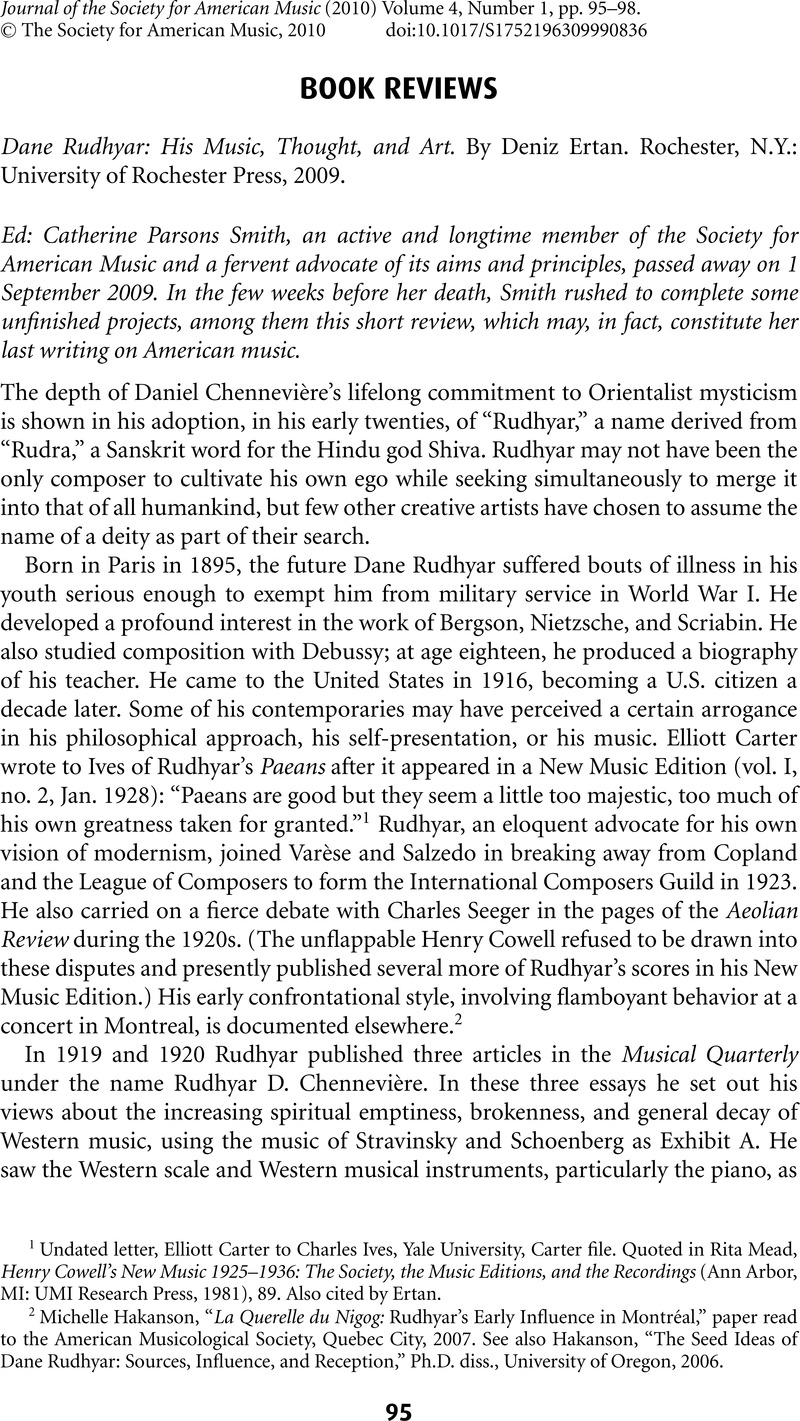No CrossRef data available.
Article contents
Dane Rudhyar: His Music, Thought, and Art. By Deniz Ertan. Rochester, N.Y.: University of Rochester Press, 2009.
Published online by Cambridge University Press: 14 January 2010
Abstract

- Type
- Book Review
- Information
- Copyright
- Copyright © The Society for American Music 2010
References
1 Undated letter, Elliott Carter to Charles Ives, Yale University, Carter file. Quoted in Mead, Rita, Henry Cowell's New Music 1925–1936: The Society, the Music Editions, and the Recordings (Ann Arbor, MI: UMI Research Press, 1981), 89Google Scholar. Also cited by Ertan.
2 Michelle Hakanson, “La Querelle du Nigog: Rudhyar's Early Influence in Montréal,” paper read to the American Musicological Society, Quebec City, 2007. See also Hakanson, “The Seed Ideas of Dane Rudhyar: Sources, Influence, and Reception,” Ph.D. diss., University of Oregon, 2006.
3 “The True Trend of Modern Music in Stravinsky's Works,” Musical Quarterly 5/2 (April 1919): 171.
4 “Erik Satie and the Music of Irony,” Musical Quarterly 5/4 (Oct 1919): 469.
5 “The Rise of the Musical Proletariat,” Musical Quarterly 6/4 (Oct 1920): 500–509, passim.
6 Letter, Dane Rudhyar to Catherine Parsons Smith, 11 January 1985.
7 See my Making Music in Los Angeles: Transforming the Popular (Berkeley: University of California Press, 2007), chapters 13–14, pp. 187–214. The prime example here: Henry Cowell gave a little-known series of performances illustrating his use of the “string piano” in Los Angeles, most likely at Krotona (the theosophical colony) in 1922. He found the climate (and the patrons) welcoming enough that he chose Los Angeles for the inception of his New Music Society concerts in 1925, a decision that has seemed puzzling without the evidence of those earlier concerts. (I now wish I had asked Rudhyar about the 1922 series when I corresponded with him. I was unaware of them at that time.)
8 Tick, Judith, “Ruth Crawford's ‘Spiritual Concept’: The Sound-Ideals of an Early American Modernist,” Journal of the American Musicological Society 44/2 (1991): 221–61CrossRefGoogle Scholar; also Tick, Ruth Crawford Seeger: A Composer's Search for American Music (New York: Oxford University Press, 1997), especially the chapters on Crawford's time in Chicago; and Oja, Carol, Making Music Modern: New York in the 1920s (New York: Oxford University Press, 2000)CrossRefGoogle Scholar.




